Exfoliation makes your skin look clearer, smoother, more refined, and evened out, thus improving your complexion’s appearance and overall skin health.
There are several ways you can exfoliate your skin, but one method we tend to gravitate toward due to the gentle and effective results it produces is the use of exfoliating acids.
Alpha hydroxy acids (AHAs) and beta hydroxy acid (BHA) are two of the most popular exfoliating acids found in various cleansers, toners, serums, and face masks.
But what’s the difference between them, and how do you know which one is best for your skin needs?
Let’s take a look at each type and what makes them unique to help you determine the best product for you.

What Are Alpha and Beta Hydroxy Acids?
Alpha and beta hydroxy acids (AHAs and BHA) are a group of natural acids derived from fruits, sugars, and other plant sources.
When used in skincare products, AHAs and BHA target various skin concerns by exfoliating the skin and reducing the buildup of dead skin cells on the skin’s surface and inside the pores.
This action will contribute to visible skin improvement by evening out the skin tone, fading hyperpigmentation, smoothing out skin texture, reducing acne, and improving the appearance of lines and wrinkles.
Alpha vs. Beta Hydroxy Acids
AHAs and BHA are both exfoliants, but each hydroxy acid has other properties that make it more appropriate for targeting certain skin concerns and improving certain skin conditions.
AHAs are water-soluble components, meaning they dissolve in water and work faster.
They also have a larger molecule size, meaning they don’t necessarily penetrate deeper into the skin but are more efficient on the skin’s surface, where they loosen the protein bonds holding dead skin cells together and help them shed naturally at a faster pace.
This will allow the new, younger, and healthier skin cells to take their place, making your skin feel smoother to the touch.
AHAs also provide more aggressive exfoliation, which may be more appropriate for repairing hyperpigmented and sun-damaged skin.
They also have effects on collagen and procollagen production and can improve the appearance of prematurely aged skin.
BHA, on the other hand, is an oil-soluble component, meaning it can cut through the oil on the skin’s surface and penetrate deeper into the skin to unclog pores by dissolving the dead skin cells stuck inside them, regulate sebum production, and give deeper exfoliation from the inside.
BHA is also antibacterial, which makes it more adequate for targeting specific inflammatory skin conditions such as acne.
The Types of Alpha Hydroxy Acids
Some of the most common AHAs used in skincare are:
Glycolic Acid
In a nutshell: Glycolic acid is the most common type of AHA naturally derived from sugar cane.
Why it works: Glycolic acid has the smallest particles of AHAs, making it easy to penetrate the upper layers of the skin effectively and break down the bonds between dead skin cells, revealing brighter and fresher skin. Glycolic acid has also been found to promote collagen production by stimulating fibroblasts, increasing collagen mRNA levels, reversing the photoaging process, and inducing collagen gene expression. This makes it effective at reducing visible signs of aging.
Who will benefit from it: Glycolic acid is the best match for those dealing with dry skin, rough skin texture, uneven skin tone, sun spots, and visible signs of aging, such as lines and wrinkles.
Lactic Acid
In a nutshell: Lactic acid is another common AHA naturally derived from lactose in milk. Like glycolic acid, it is known to have powerful exfoliating and anti-aging effects, with the difference between these two being that lactic acid is less irritating and more moisturizing than glycolic acid.
Why it works: Lactic acid breaks down the bonds between dead skin cells and helps reduce the appearance of discoloration, sun spots, and fine lines. It also increases ceramide production in the skin, boosting its natural moisturization levels to make it feel softer and smoother.
Who will benefit from it: Those with dry and sensitive skin dealing with concerns such as sun spots, pigmentation, and wrinkles will benefit the most from lactic acid.
Mandelic Acid
In a nutshell: Mandelic acid is an AHA made up of larger molecules than glycolic and lactic acids, and it is naturally derived from bitter almonds.
Why it works: Mandelic acid is known for its gentleness and low irritation levels. It works by loosening the bonds between dead skin cells to exfoliate the skin, revealing brighter and smoother skin underneath while also fading hyperpigmentation. Mandelic acid is also antibacterial, with the ability to improve acne and provide protection from environmental stresses.
Who will benefit from it: Mandelic acid is the best fit for those with sensitive skin dealing with inflammatory conditions such as acne and acne scarring, as well as hyperpigmentation, uneven skin texture, and dull skin.
Malic Acid
In a nutshell: Malic acid is a type of AHA made from apple acids and has a milder exfoliating effect than the other AHAs.
Why it works: Malic acid isn’t an effective ingredient on its own, but it is beneficial for supporting collagen production and improving hyperpigmentation by reducing the overproduction of melanin when combined with other acids.
Who will benefit from it: Those with dry and sensitive skin dealing with issues such as sun spots, pigmentation, and wrinkles will find products containing malic acid along with other exfoliating acids helpful in improving their skin concerns.
Tartaric Acid
In a nutshell: Tartaric acid, while not as widely known and researched, is another type of AHA derived from grape extracts.
Why it works: When combined with other AHAs, tartaric acid has been found to promote antioxidant activity in the skin and help improve hyperpigmentation, sun spots, and uneven skin tone.
Who will benefit from it: Since tartaric acid is usually a supportive rather than an active ingredient in skin care products, those with all skin types will likely benefit from it. However, it may be most effective for those dealing with hyperpigmentation concerns.
Citric Acid
In a nutshell: Citric acid is a type of AHA extracted from citrus fruit extracts.
Why it works: Citric acid has mild antioxidant properties that enhance the product’s formula and supports other exfoliating acids as a pH balancer.
Who will benefit from it: Since citric acid is generally used as a pH adjuster that enhances product efficacy, it is suitable for all skin types.
What are the Benefits of Using AHAs?
AHAs can offer a wide range of benefits when addressing various skin concerns.
Some of the main advantages of using them include:
- Exfoliating the skin to reveal brighter and smoother skin underneath.
- Reducing sun spots, pigmentation, uneven skin tone, and age spots.
- Improving the appearance of wrinkles and fine lines.
- Promoting collagen production.
- Balancing oil production.
How to use AHAs?
AHAs are the more aggressive type of exfoliation in the world of exfoliating acids, which is why you should avoid using them more than 1-2 times a week unless your skin is resilient and the product you are using has a mild concentration of exfoliating actives.
Additionally, when using AHAs, you want to make sure that the rest of your skincare routine is tailored to replenish the skin and make up for the stripping effects of AHAs.
Therefore, try adding hydrating serums, repairing moisturizers, and high SPF, as AHAs are known for making your skin more sensitive to the sun and more susceptible to burns and sun damage if not protected.
Potential Side Effects of Using AHAs
AHAs are quite potent, and the side effects of misusing products that contain them are common.
Here are some of the potential side effects that can occur if AHAs are not used properly:
- Skin irritation and redness.
- Increased sensitivity to sunlight.
- Dryness and peeling.
- Breakouts due to a compromised skin barrier.
- Hyperpigmentation or discoloration due to chemical burns and improper healing.
To minimize these risks, it is important not to overuse AHAs and stick to the recommended frequency of 1-2 times a week.
Additionally, always wear sunscreen in the morning, especially when using products with these acids, since they can make your skin more sensitive to sun exposure.
Finally, make sure the rest of your skincare routine is gentle and suitable for your skin needs, as this will help minimize irritation, keep your skin hydrated, and prevent overstimulation.
This is especially important for those with sensitive skin types.
With the right precautions, AHAs can be a great addition to your skincare routine and help you get a clear, glowing complexion.
The Types of Beta Hydroxy Acids
BHA, although regularly addressed as a plural, is actually the name given to a single acid belonging to this group:
Salicylic Acid
In a nutshell: Salicylic acid is a BHA naturally derived from willow tree bark, wintergreen leaves, or sweet birch bark.
Why it works: Salicylic acid exfoliates the skin, removes dead cells to unclog pores, and allows other products to penetrate deeper. It also has anti-inflammatory properties that help reduce redness, swelling, and irritation while helping to control sebum production.
Who will benefit from it: Those with oily and acne-prone skin looking for an effective way to reduce acne, as well as those dealing with enlarged pores and blackheads, can benefit the most from salicylic acid.
What are the Benefits of Using BHA
BHA, or beta hydroxy acid, has a multitude of benefits to offer when it comes to addressing various skin concerns, including:
- Deeply cleansing the skin.
- Exfoliating dead skin cells.
- Dissolving gunk and cellular debris stuck inside the pores and unclogs them.
- Reducing acne breakouts.
- Balancing oil production.
- Soothing inflamed skin.
- Helping other skincare products absorb better into the skin.
How to Use BHA?
BHA is best used in a toner form of up to 2% on clean, damp skin, as it is more penetrating when the consistency is lightweight and applied on a moistened surface.
It is usually recommended to use BHA 2-3 times a week, depending on your skin concern and the rest of the products in your skincare routine.
For example, if your concern is acne, using a BHA-containing toner up to three times a week would be sufficient.
If you have sensitive skin, it’s best to start off with once a week and work your way up.
On the other hand, if you use other active ingredients, such as retinoids or benzoyl peroxide, to target acne, try to avoid using BHA on the same day.
When combining actives, it’s best to alternate the use and give your skin enough time to adjust.
Potential Side Effects of Using BHAs
While BHA is generally gentle and well tolerated by most skin types and concerns, misusing it can result in side effects, including:
- Dryness.
- Irritation.
- Flakiness.
- Peeling
- Redness.
- Inflammation.
- Damaged skin barrier.
- Exacerbated acne.
One of the most common ways to misuse BHA is to overuse it without following up with a complete skincare routine that nourishes your skin and counteracts any potential dryness.
Therefore, to make sure you are using any BHA toner correctly, use it no more than 2-3 times a week and follow up with a nourishing moisturizer and sunscreen in the morning.
Should You Use AHA or BHA?

In short, AHAs are typically more effective in targeting general skin concerns, such as uneven skin tone, texture, and aging concerns, while BHA is more specific to acne-prone skin and targets blackheads, enlarged pores, or inflamed pimples.
However, getting it right with the skin isn’t always simple, which is why when choosing between AHAs or BHA, you should take into consideration the following things:
- The skin concern you want to address.
- The current state of your skin.
- The rest of your skincare routine.
Let’s explain this in more detail:
The Skin Concern
AHAs are generally recommended for more general skin concerns, such as dullness, uneven skin tone and texture, dryness, wrinkles, and fine lines.
From there, you should also choose the intensity of the acid and its properties based on their individual characteristics and benefits.
For example, lactic acid is more suitable for dry, sensitive skin dealing with texture irregularities and discoloration, while glycolic acid is more suitable for those with normal skin dealing with pigmentary issues and aging concerns, while mandelic acid is more suitable for those with acne and scarring concerns.
On the other hand, BHA is more suitable for those with oily, acne-prone skin looking to reduce breakouts and clear out the pores.
If any of these describes your skin concern, you should keep it in mind, but don’t make the purchase until you’ve considered the following:
The Current State of The Skin
After deciding on the skin concern you want to address, it is important to assess the current state of your skin.
This is important because our skin changes occasionally, depending on the season, humidity levels, and even internal changes, such as hormonal imbalances, eating certain foods, taking certain medications, etc.
All these things can affect the skin’s hydration, sensitivity levels, oil production, and how it reacts to products.
Therefore, if you want to try an exfoliating toner that contains a high-strength exfoliating acid, but it’s currently winter, and your skin feels dry and sensitive, this is probably not a good idea and may lead to irritation, flakiness, and dryness.
Instead, you should opt for the closest acid that targets your concerns but is also appropriate for your skin as it is at the time you want to try the product.
For example, try lactic acid instead of glycolic acid to refine skin texture, fade hyperpigmentation, and even out the skin tone.
On the other hand, if your skin is oily, you live in a warm and humid climate, and you are dealing with clogging and breakouts, choosing the wrong acid may not be the best idea either, as it might not do anything for you.
For example, if BHA is only available in concentrations of up to 2%, but your skin needs something more to deal with stubborn skin concerns such as clogging and acne, try the closest acid that targets the same skin concerns, such as mandelic acid in a higher percentage instead.
By taking the current state of your skin into consideration, you will ensure you are giving it exactly what it needs and when it needs it.
The Rest of The Skincare Routine
Finally, when choosing your exfoliating acid, you should also take into consideration the rest of your skincare routine.
This is because most people don’t need more than one active ingredient to address a single skin concern, as this can be too much for the skin and can cause irritation and reactions.
What I mean by this is if you want to address acne or signs of skin aging, but you are already using a retinoid, which is a product that also addresses acne and signs of aging, you don’t need to use both a retinoid and an exfoliating acid in the same routine.
On the other hand, if you are using a gentler active ingredient, such as peptides, to address these concerns, you can add an AHA or BHA to your routine.
Or, if you are already using hydroquinone, which is an aggressive skin-lightening product, to address hyperpigmentation, adding an AHA or BHA is completely unnecessary and can potentially lead to irritation and skin damage.
But, if you are using niacinamide to target uneven skin tone and hyperpigmentation, this gentle active could use the exfoliating acid boost to help expedite the results.
This is how you will balance your skincare routine so that each product has a purpose and serves a greater benefit to the skin, instead of adding products just for the sake of it and potentially even experiencing some side effects of doing so.
Therefore, when choosing between AHAs and BHA, always take into consideration your skin concern, the current state of your skin, as well as the rest of the skincare routine, as this is how you will make the most out of your products and make sure that your skin remains healthy, happy, and glowing by getting exactly what it needs and when it needs it.
Can You Mix AHAs and BHA With Other Skincare Ingredients?
AHAs and BHA can be mixed with many ingredients found in skincare products; however, there are some exceptions to this rule, as combining certain actives with exfoliating acids can lead to side effects, such as dryness, irritation and a compromised skin barrier.
Therefore, here are some of the ingredients that can be safely combined with AHAs and BHA and some that should be avoided:
Ingredients AHAs and BHAs Can Be Mixed With
Niacinamide: Niacinamide is a water-soluble vitamin that can be used together with an AHA or BHA and can help soothe and protect the skin by reducing inflammation, hyperpigmentation, and acne breakouts.
Ceramides: Ceramides are lipids that exist in the skin’s protective barrier layer, which can be disrupted by the use of AHA and BHA. Adding a ceramide-based moisturizer to your skincare routine will help replenish this protective layer and prevent moisture loss.
Hyaluronic Acid: Hyaluronic acid is a powerful humectant that helps to keep the skin hydrated and plump. Using it in conjunction with an AHA or BHA can help reduce dryness caused by exfoliation.
Benzoyl Peroxide: While this combo should be reserved for those with more resilient skin due to the potential for dryness and irritation, it can effectively treat moderate to severe acne. Benzoyl peroxide is an antibacterial component that inhibits the acne-causing bacteria inside the pores and, when combined with AHA or BHA, can visibly reduce acne and refine the complexion.
Azelaic acid: Azelaic acid is a naturally occurring acid that helps reduce the appearance of blemishes and can be used in combination with an AHA or BHA to even out skin tone and texture and reduce the appearance of acne scars.
Ingredients AHAs and BHAs Cannot Be Mixed With
Vitamin C: Vitamin C is an antioxidant that helps fade pigmentation, brighten the complexion, and reduce inflammation. However, because it is acidic in nature, combining it with AHAs or BHAs can create too much acidity on the skin and cause irritation, which is why it’s best to use them at different times.
Ferulic Acid: Ferulic Acid is another antioxidant that helps protect the skin from environmental stressors. As with vitamin C, it should not be combined with AHAs or BHAs, as this can increase irritation.
Retinol: Retinol is a form of vitamin A that helps reduce the appearance of lines and wrinkles by increasing cellular turnover. However, this rapid cellular turnover combined with rapid cellular removal done by the acids can cause excessive dryness and irritation and even compromise the skin barrier in the long run.
Tretinoin: One of the most potent forms of topical retinoids, tretinoin shouldn’t be mixed with AHAs and BHAs under any circumstance, as it can be extremely irritating and even cause permanent skin conditions such as rosacea.
Hydroquinone: This lightening agent is an active ingredient in many whitening creams and can be used to fade hyperpigmentation. However, combining it with AHAs or BHAs can cause excessive skin irritation that could even lead to permanent discoloration.
My 3 Recommended AHA Toners
REN Ready Steady Glow AHA Tonic
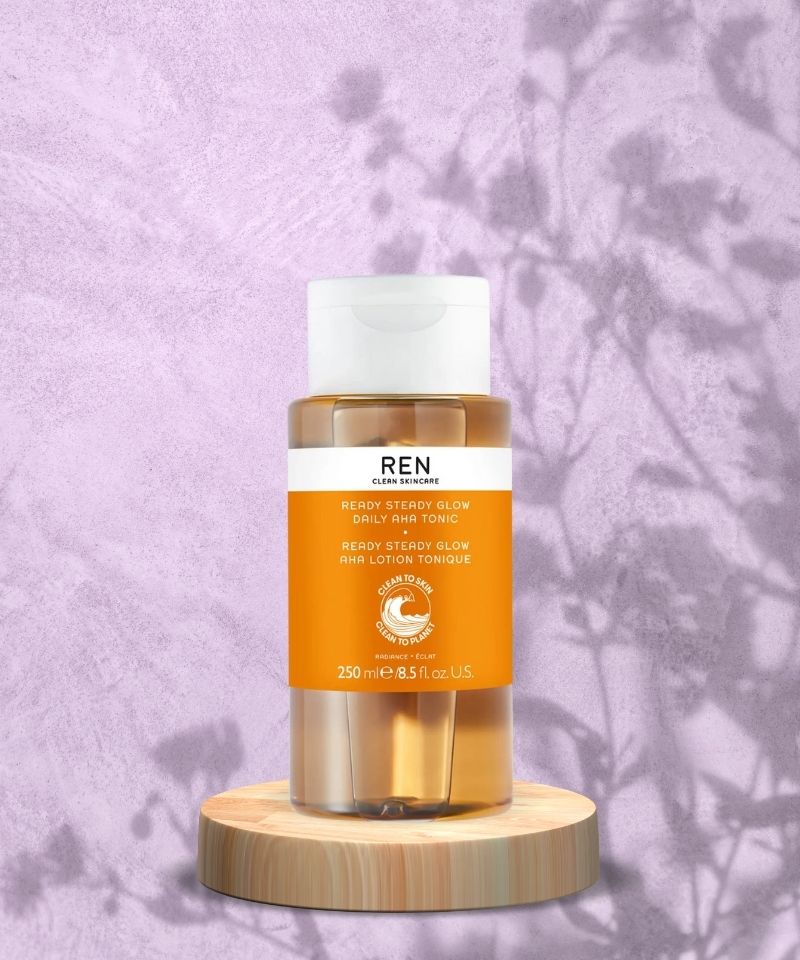
• Best for normal, dry skin.
The REN Ready Steady Glow is a gentle exfoliant containing 5% lactic acid, which helps lift away dead skin cells and impurities, revealing brighter, smoother, and clearer skin.
Suitable for normal, dry, and sensitive skin use, this lightweight toner has a glowy finish that instantly brightens up the complexion and smooths out uneven skin texture for a more radiant appearance.
COSRX AHA 7 Whitehead Power Liquid
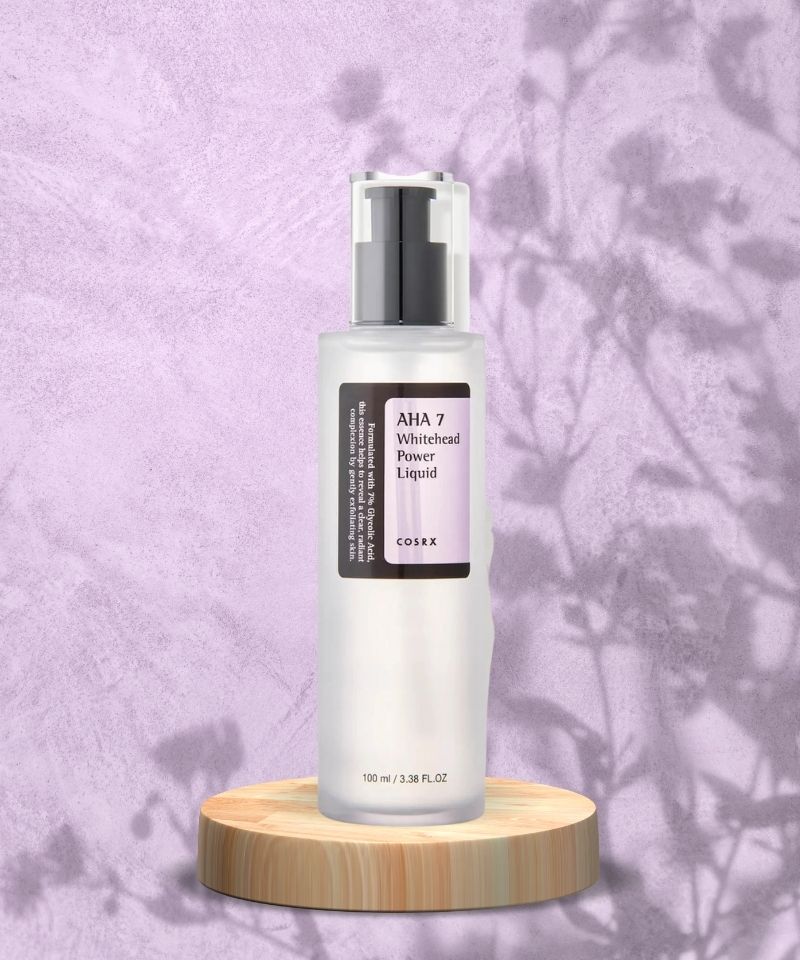
• Best for sensitive, reactive skin with acne.
The COSRX AHA 7 Whitehead Power Liquid is a mild exfoliating toner containing glycolic acid, brightening niacinamide, and skin-soothing panthenol.
Gentle, lightweight, and suitable for sensitive skin with acne, this toner helps reduce the appearance of whiteheads, blackheads, and acne blemishes while also refining skin texture, minimizing the appearance of enlarged pores, and soothing redness and irritations caused by inflammatory skin conditions such as acne.
Vichy LiftActiv B3 Serum
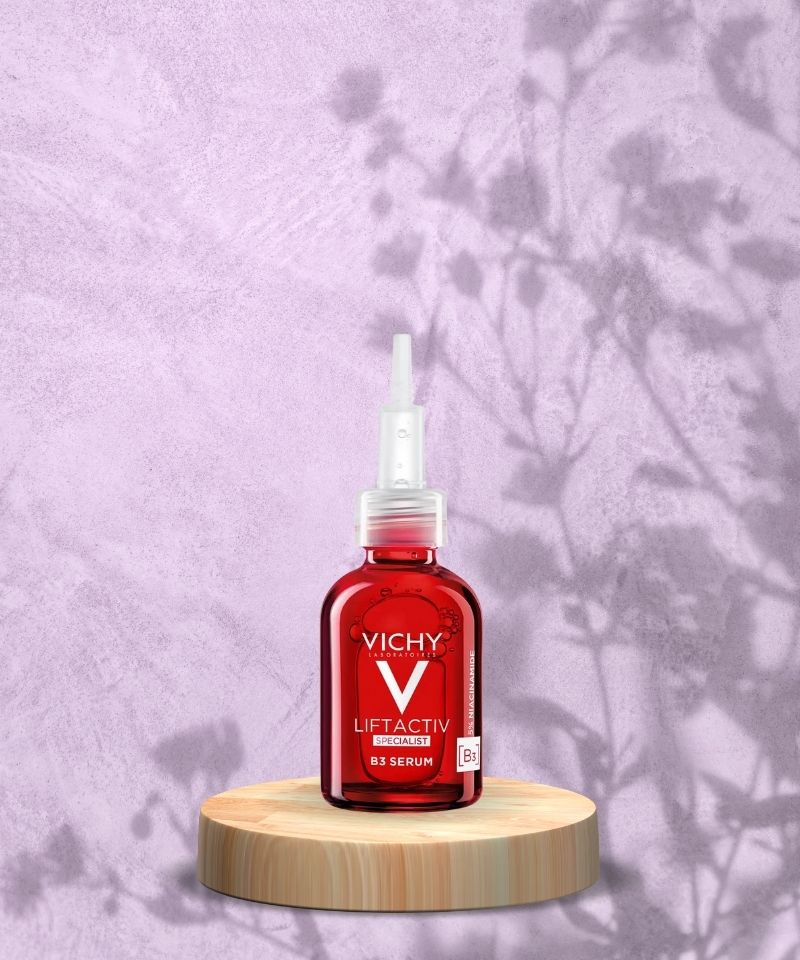
• Best for mature skin and signs of aging.
The LiftActiV B3 Serum by Vichy is a fantastic addition to the skincare routine of those trying to minimize the appearance of signs of aging.
Formulated with glycolic acid to gently exfoliate the skin and reduce the appearance of lines and wrinkles, along with brightening niacinamide and tranexamic acid to help regulate the overproduction of melanin and reverse sun spots as well as fade hyperpigmentation, this lightweight serum will improve pigmentary irregularities and overall tone after only a few uses.
The addition of skin-firming peptides and natural plant extracts will also help improve the firmness and elasticity of the skin for a smoother, younger-looking complexion.
My 3 Recommended BHA Toners
Paula’s Choice SKIN PERFECTING 2% BHA Liquid Exfoliant
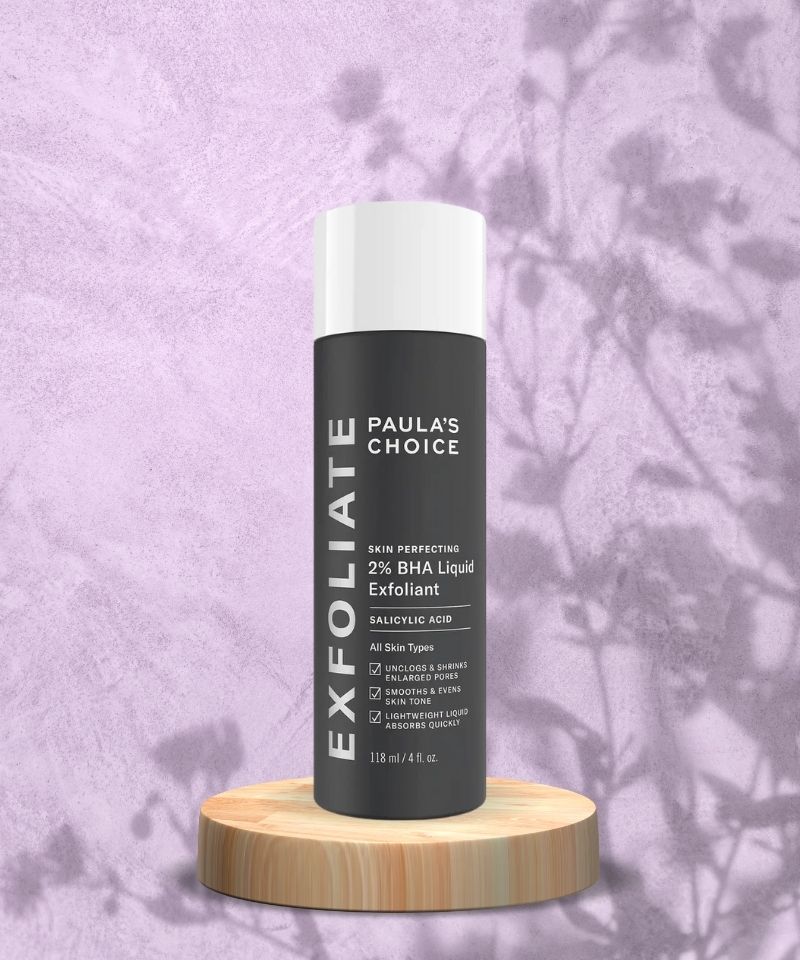
• Best for dry, acne-prone skin.
The Paula’s Choice SKIN PERFECTING 2% BHA Liquid Exfoliant is a gentle yet effective exfoliating toner containing salicylic acid that clears clogged pores and reduces the appearance of blemishes.
Ideal for dry, acne-prone skin, the lightweight toner also contains soothing green tea extract and many hydrating components to calm skin irritation and leave the skin looking plump and glowy.
Paula’s Choice RESIST Daily Pore-Refining Treatment 2% BHA

• Best for oily, acne-prone skin.
The RESIST Daily Pore-Refining Treatment 2% BHA by Paula’s Choice is a mattifying toner that helps reduce the appearance of enlarged pores and blemishes.
Formulated with salicylic acid to clear out pores, this lightweight toner also contains hydrating and soothing ingredients such as glycerin and allantoin to calm redness and irritation while reducing shine.
Ideal for oily, acne-prone skin, this toner will help refine the texture of the complexion while leaving it looking matte yet hydrated and refreshed.
Medik8 Press and Clear
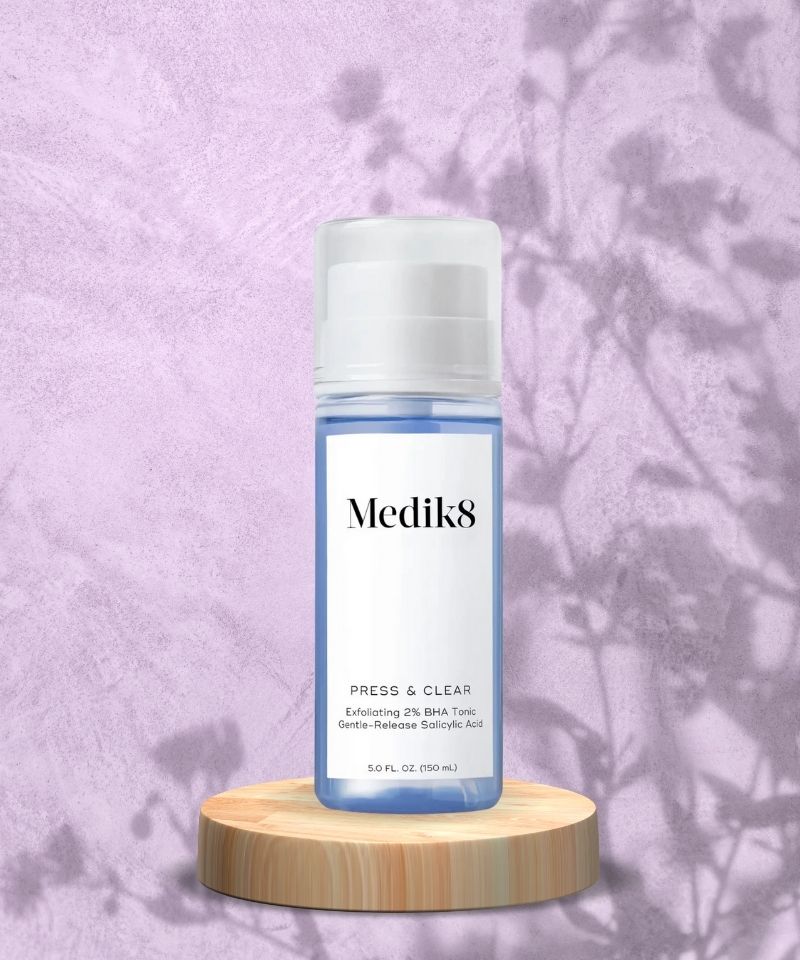
• Best for sensitive, reactive, acne-prone skin.
The Medik8 Press and Clear is a gentle yet effective toner containing salicylic acid to unclog pores and reduce the appearance of blemishes.
Formulated with natural extracts such as sake and aloe vera, this lightweight toner helps soothe skin irritations while brightening tranexamic acid will reduce the appearance of post-inflammatory hyperpigmentation and uneven skin tone.
Fantastic for those with sensitive and reactive acne-prone skin, the Press and Clear will help clear out impurities without causing any redness or irritation and is one of the gentlest BHA toners out there.
Frequently Asked Questions
Here are some of the most frequently asked questions about AHAs and BHA:
Can AHAs and BHA Be Used Together?
No, AHAs and BHAs should not be used together unless formulated in the same product, as this can cause dryness and irritation.
It is best to use AHAs and BHAs at different times, as they work in different ways and have different effects on the skin.
Is AHA or BHA Better?
If you’re looking for something to even out the skin tone, fade hyperpigmentation, refine texture, and reduce the appearance of lines and wrinkles, an AHA might be the best option.
If you’re looking for something to help reduce the appearance of blemishes, blackheads, and whiteheads, a BHA might be the better choice.
Are AHAs or BHA Suitable for Sensitive Skin?
Yes, both AHAs and BHAs can be suitable for sensitive skin if you use products formulated with milder percentages and added soothing ingredients. It is always best to test a small patch of your skin first before applying it all over the face.
Can AHAs or BHA Help With Acne Scars?
AHAs can reduce the appearance of acne scars by removing dead skin cells, which helps reveal brighter and smoother skin. BHA, on the other hand, can help clear out pores, reducing the chances of future breakouts and scarring, but it won’t directly affect acne scars.
Can You Use AHAs and BHA in The Morning?
AHAs and BHA are best used as part of your evening routine as this will minimize the risk of sun sensitivity and photodamage.

My name is Simone and I am a certified skin specialist. I created this website to teach my readers how to take great care of their skin and I also like to occasionally share my honest opinions on skincare products I’ve tried. You can learn more about me here.
